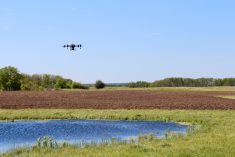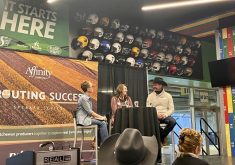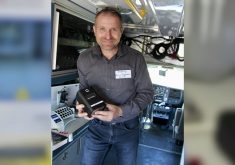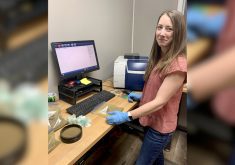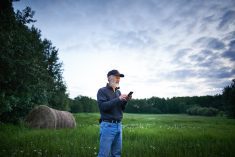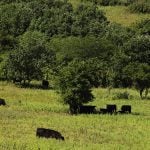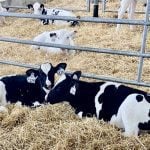I am usually one of the last guys to jump into new technology. New ideas? Yes. New management techniques? Yes. But new technology? I’ll admit I am resistant to change. But several months ago, I jumped out of my comfort zone with both feet.
Last summer I bought a drone — the DJI Mini Pro 3. It is a small drone that is used for taking videos only. I love it. It weighs only 249 grams, so you do not need a licence to fly it, but it still takes very high-quality video in 4K. Not only have I taken hundreds of hours’ worth of video as you might have seen from my social media, but I also use it to save time and repairs on equipment. I can check pasture with it. I drive up to a pasture gate and turn off my engine. In about ten minutes, I can have the drone up and across the bumpy pasture, check the water and the herd, and then be back on the road to the next stop. If I need to move the herd into a new paddock and want to make sure the gates are closed, a quick flight to the back corner can confirm it. I have been very happy with my investment of approximately $1,500. It has saved me hundreds of hours and many unnecessary repair bills as I don’t need to bounce across all that rough terrain in my pastures to check on things nearly as often.
A few months ago, I jumped in with both feet. I picked up a DJI Agras T-10 seeding drone from Land View Drones for approximately $25,000. This is the smallest seeding drone they sell at 24.9 kg. They have bigger drones, but the T-10 is just light enough to only require a basic drone licence to fly. A heavier drone would require an advanced licence. They purposely sell the T-10 in Canada with a smaller tank to get the loaded weight just under the 25-kg mark.
Read Also
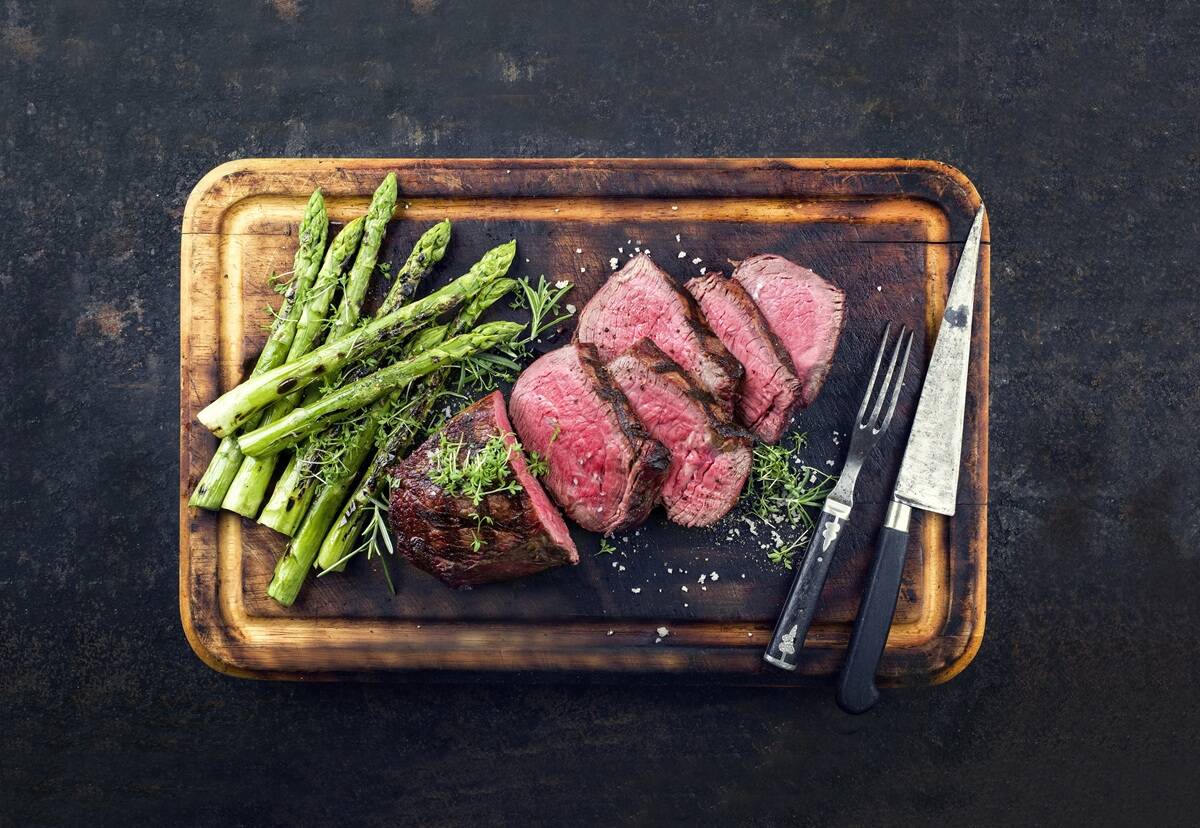
Building demand together: The impact of Canada’s beef import levy
The beef import levy has become a central tool for ensuring balance in Canada’s beef industry
Now, most agricultural drones are set up to spray. Even though that is still illegal in Canada, that’s what most of the drones are used for. I have no use for spray on my ranch, so I ordered the drone with a spreader system installed instead. A drone with a spreader attachment is not very common here in Alberta.
Like the Mini 3, this purchase has saved me a lot of time and equipment repairs already. In the past, to top dress seed into my pastures, I used a broadcaster of some kind and drove back and forth across some very difficult terrain. I have used a quad-mounted spreader, a pull-type Valmar and even hired a floater truck. In all cases, the terrain has been a major complication due to equipment repairs. Thanks to the drone, there has been a substantial reduction in my “sore back complaints” because I don’t have to bounce around all day over the rough pasture. Now, I sit in a lawn chair and supervise while the T-10 does most of the work for me.

The downsides to drone seeding are the battery storage and volume of seed it can carry. A battery will last about eight minutes. Depending on the seed size and application rate, it’s around eight minutes before I have to refill the seed. Yes, I said eight minutes. This forces me to get out of my lawn chair quite often to change the batteries and top up the seed tank. I am set up with a generator and two charging units with five batteries. Two of them are always charging as it takes about 16 minutes to charge one battery. I can travel to the site with my SUV, and all I need running while I am there is the generator for charging batteries.
Distance to the far side of the field has been an issue. I have found that I need to park in the middle of the field, if I can, and to seed in small chunks to minimize non-seeding flight time. Even with all the recharge and refill breaks, I have still been seeding at between 10 and 15 acres per hour.
A huge bonus the drone has over my manual ground application is the precision-guided GPS. When it was just me driving back and forth hoping to be close to the next pass, it was pretty hit or miss on accuracy of seed disbursement. You might know the feeling of picking a dark patch in the trees and then second-guessing which of the dark patches you were aiming for. Or maybe it was the tall fence post? Either way, seed distribution was a bit chaotic for me.
I can now use the drone to fly the perimeter of the field and map it out by adding waypoints. The drone then plans out its flight path within those boundaries. I can add in any obstacles or areas I don’t want seeded.
I can adjust the flight pattern as I see fit and then save the flight plan. Then I say go. The drone can now carry out its task virtually on its own. When the battery or seed tank gets low, I bring it home to change a battery, fill the seed tank and send it on its way again.
It remembers the precise spot where it stopped and resumes its journey. I accidentally found out that when the controller loses contact with the drone, the drone keeps working without me. That’s a good employee to have around.
I covered a lot of ground last summer, adding mostly a legume top dress to several pastures.
The drought of 2021 and 2022 was hard on my clovers so I am excited to bump my legume content back up. Clovers work well in my environment, but I am also adding a variety of different legumes and broadleaf plants to try to increase the polyculture. With the rain last summer, we had some amazing catches.
In addition to pasture improvement, the drone gives me an option to seed fall cover crops on a neighbour’s grain fields to get some fall and early winter grazing.
In Canada, with our short growing season, it is difficult to get a crop seeded and have enough time for growth before the killing frost. With the drone, I can sneak out before harvest and top-dress the seeds above the existing crop. The idea is to get the seeds out there as the crop ripens, hopefully get a bit of rain to cause germination, and then have the new seedlings ready to jump when the cash crop is harvested. My grain farmer is happy with this as he will get a living root throughout the fall and benefit from the animal impact and nutrient recycling back to his soil.
I don’t own a lot of equipment. If you recall, I don’t even own a tractor here on the ranch. Why a drone then? Not only can it save me time and money on the ranch, but I am also looking to expand into another profit centre. I did the math. With any piece of equipment, I would always look at the economics behind owning it.
You may have heard me say it before: it is okay to own equipment, as long as the economics work. Over the years with me calculating hundreds of gross margins on equipment, a common reason equipment is not economical on the farm is because it doesn’t get used enough. The same is true for my ranch. My drone needs to work more so we started offering custom seeding to local producers. If the equipment is sitting here, it might as well be working. If I am not here to run it, I have others trained to keep the drone working. It never hurts to have another positive profit centre.
It is not very common yet, but custom drone seeding is now a thing in Alberta. I, for one, am enjoying being a high-tech redneck with my new toys. Check out the Greener Pastures Ranching YouTube or Facebook page to see the Mini Pro 3 capturing the T-10 in action.
Move over Tom Cruise, Top Gun Top Dressing is here.
Steve Kenyon runs Greener Pastures Ranching Ltd. in Busby, Alta. Visit the website, call 780-307-6500, email [email protected] or find them on Facebook.




